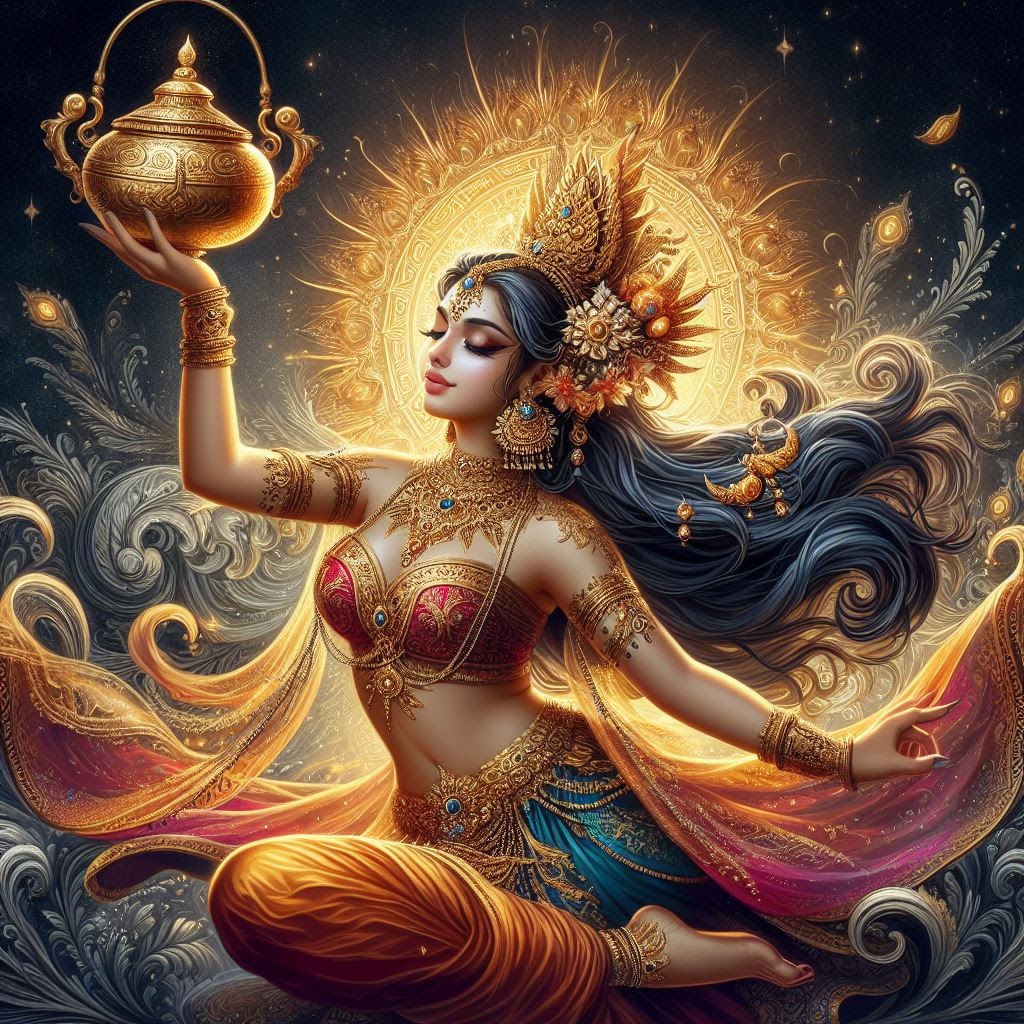Namaskar,
This is my second most favorite topic of the
challenge. Samudra Manthan, or the churning of the celestial milky ocean, is a
wonderful episode from Srimad Bhagavatam. It gets a brief mention in the Adi
Parva before the actual story begins.
So, one day, the gods held a meeting on Mount Meru
and discussed how too many of them were getting killed or injured due to the
constant attacks of the daityas (anti-gods). They asked Brahma for help, who
took them to Maha Vishnu. He advised them to churn the Kshera Saagaram (Ocean
of Milk) to obtain the nectar of life, amrita (an elixir that would make them
immortal). He also told them to strike a deal with the anti-gods since the churning wasn’t an easy task.
Once the whole thing was settled, Mount Mandara was
chosen as the churning rod. However, it sank into the water. That’s when Kurma
Raja (the king of Tortoise) agreed to hold the mount on his back. The ocean
agreed to allow them to churn her if they shared the gifts with her.
Acting on Maha Vishnu’s advice, the gods requested
Ananta (Sesha Naga), a majestic snake, to carry Mount Mandara to the ocean and
act as the rope. The anti-gods held Ananta’s face while the gods held his tail
and began to churn.
It was a back-breaking job, but both sides refused
to give up. Maha Vishnu gifted them the necessary strength to keep going. The
order and list of items that appeared from the ocean vary in different
versions.
As they churned, the moon rose from the water and
went into the sky. Then came out goddess Lakshmi, sitting on a lotus flower.
She married Maha Vishnu.
Suradevi (the goddess of wine) came out of the
waves. The anti-gods thought it was nectar, but realized the truth later. The gods invited Suradevi
(also called Varuni) to live in heaven. She accepted
the invitation.
Note: There’s
a Sura
Devi Temple in Dehradun.
The Kaustuba jewel came out dazzling and adorned
Maha Vishnu’s chest. It is a large and radiant ruby.
The apsaras came out dancing and chose to stay in
the heaven.
Next, the Kalpavriksham (the wish-fulfilling
parijata tree) appeared from the ocean. Indra’s wife, Sachi Devi, requested to
place it in her celestial garden.
Halaahala or Kalakuta, the most deadly poison, came out fuming, choking everyone. They were terrified and asked Shiva to handle the poison as it could destroy the world (in many versions, the poison comes out first and is followed by other items). Shiva agreed and held the Kalakuta in his throat. This turned his throat blue, and he got the name Neelakanta.
I recently read a book, Floral Folklore, which had a mini addition to this story. According to the story in the book, a few drops of the Kalakuta still dripped onto the earth. Aconite plants grew from this poison and contain the same properties.
At last, Dhanvantri, the physician of the gods,
arrived through the waves, carrying a pot of amrita in his hands. The devas and
daityas were excited. The daityas stole the pot from him and ran away into the caves.
Maha Vishnu transformed into a beautiful young woman called Mohini and went to retrieve the pot of amrita. He then distributed the amrita among the gods. A daitya sneaked past and consumed a drop of the amrita. Though he was captured and killed, the amrita made him immortal. He became Rahu and Ketu (Rahu is the head and Ketu is the body), the two shadowy planets added to the rest in Vedic astrology.
The remaining amrita was safeguarded in the secret chambers of
heaven with guards and magic protecting the place.
I’m participating in #BlogchatterA2Z.
The AI images are made on Bing.




Your posts have been consistently great. Now I am wondering about the comparative myths between these and European myths which might have a shared beginning in Proto-Indo-European myths and language.
ReplyDelete--
Tim Brannan, The Other Side blog
2024 A to Z of Dungeons & Dragons, Celebrating 50 Years of D&D
Thank you, Tim! That would surely be interesting to find out.
DeleteOne of my favourite topics too. It's so beautiful and layered.
ReplyDeleteWritten wonderfully as always. ❤️
Thank you, dear girl ❤️
Delete